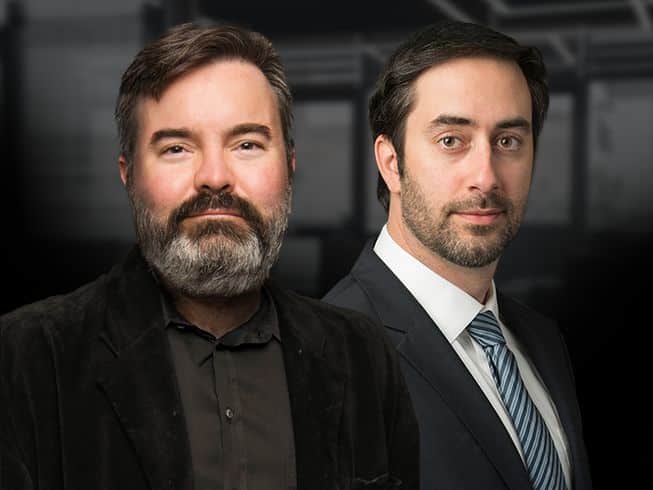U.S.S. Hopewell (DD-681)
Over A Billion Recovered Nationwide
U.S.S. Hopewell (DD-681)
The vessel was named for Midshipman Pollard Hopewell, who had lost his life defending his ship (the famous U.S.S. Chesapeake) against a British frigate’s attack in the War of 1812. Bethlehem Steel Company laid the keel for his namesake vessel on October 29, 1942. Due to the need for rapid deployments, Fletcher-class destroyers (such as the U.S.S. Hopewell DD-681) relied on almost indiscriminate use of asbestos to help safeguard against fires and enemy shelling. By 1944, the U.S.S. Hopewell had become an important part of the Pacific vanguard, which was “leap frogging” its way toward mainland Japan. The crew adopted as its motto “Offense, Defense,” echoing Pollard Hopewell’s own vessel’s motto from back in 1813, “Never Give Up The Ship.”
The Hopewell had the advantage of achieving greater range than earlier destroyers (6,500 nautical miles), which also added to the required skills of the Hopewell’s crew, to deal with any emergency repair at sea. Ultimately, this high level of her crews’ skills may have ironically exposed more crewmembers to the dangers of asbestos. In the 1960s, a greatly renovated Hopewell became a part of NATO’s defenses against aggressive Communist challenges.
That new “Offense, Defense” included the Hopewell’s sailing the “gunline” in Vietnam. The Hopewell and her crew also demonstrated a unique ability for the US Navy to change its mission skills, from WWII to the Vietnam war. The Hopewell and her crew won nine battle stars in WWII, four Korean war battle stars, and several service awards for outstanding tours of duty in Vietnam.
Construction
The U.S.S. Hopewell was not only built very quickly (in just a little over six months) at Bethlehem Steel’s San Pedro, California yard, but the Navy also demanded that Bethlehem make her flexible in her mission capacity. This flexibility had implications for addressing her frequent repairs and then, after WWII, her upgrades too. As the U.S.S. Hopewell’s long history of service suggested, the problems of updating an older vessel often meant asbestos exposure was a larger risk. Unlike hundreds of other similar vessels, the Hopewell was not decommissioned for any long period of time. This aging but dependable Naval destroyer needed more frequent repairs, including to the systems that typically relied most on asbestos: engines, insulation, and wiring.
Sometimes, asbestos was used in surprising ways. Symptoms of asbestos exposure multiplied in the decades after WWII. Experts in lawsuits showed connections between asbestos use on other Fletcher-class destroyers and the declining health of Naval crews.
Repairs and Upgrades
During her heavy WWII service, the Hopewell and her crew were almost immediately engaged in combat, preparing for the crucial Marshall Islands invasion. One of her early engagements off of Corregidor was fierce enough to result in her being riddled with fragments, and taking more than 17 casualties. Many years later, experts noted that the costs of these often deadly short-term encounters also could have long-lasting effects. These emergency repairs often caused crew exposure to potential sources of asbestos.
Another example of the urgency of the U.S.S. Hopewell crew’s making repairs at sea was long after WWII. In 1955, training exercises went awry, and an attack bomber crashed on her deck. Once again, any hesitation about using asbestos was secondary for keeping vessels such as the U.S.S. Hopewell in action. Also after WWII, sophisticated new monitoring equipment was brought in to help fight in Korea. In making these upgrades, crew members were often once again unwittingly exposed to asbestos.
Asbestos Risks On the U.S.S. Hopewell (DD-681)
Few crew members learned of the dangers of asbestos, even as they often complained of breathing it in from many different places on a vessel such as the U.S.S. Hopewell. Asbestos was admittedly useful in preventing fires, or in controlling high temperatures, but few laymen were told of asbestos’ known health risks.
In the 1940s, officials and scientists had privately discussed some of the known risks of asbestos with some West Coast shipyard manufacturers. Decades later, as symptoms related to asbestos became obvious, the US Navy finally began changing its asbestos use policy. But these changes all too often came too late for vessel crews such as those who served aboard the U.S.S. Hopewell. From 1960 through part of 1967, the Hopewell provided powerful and effective support to US soldiers in the Vietnam war. Changes to Navy asbestos policy really began in the 1970s, but the Hopewell was struck from Navy rolls almost as these positive changes in asbestos finally occurred. In 1972, the proud U.S.S. Hopewell DD-681, which had protected so many other ships, was herself sunk as a deep water target.
We Take Our Clients’ Cases Personal
Helping Victims of Mesothelioma Is Why We Do What We Do
Your firm has made this stressful process easy and comfortable for me.
I couldn’t have done it without you.
The professionals at Shrader & Associates did the work, hassle free, and ensured I was able to leave a legacy for my family.
Your team stood by me throughout the entire process.
Thanks to you, the grief of my loss would have been almost unbearable otherwise.

The Right Team Makes a Difference
Mesothelioma cases require technical knowledge and an understanding of complex laws. An attorney with experience trying these claims and substantial resources to leverage on your behalf is your best bet to having a strong case. We are nationally recognized for providing quality representation to mesothelioma patients and their families.
Meet Our Attorney










![aaj-leaders-forum[2] U.S.S. Hopewell (DD-681)](https://shraderlaw.com/wp-content/uploads/2022/04/aaj-leaders-forum2.png)


